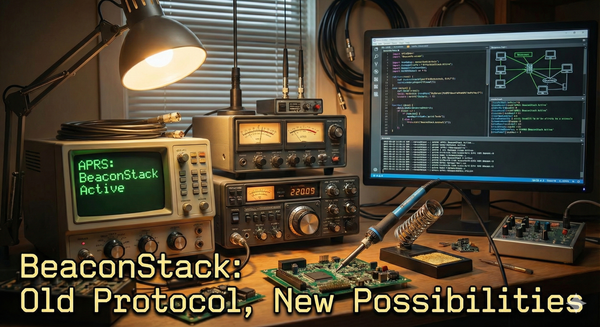HamsoverIP in Action: My First Impressions and Setup
I recently tested HamsoverIP, a VoIP service tailored for amateur radio operators. Easy multi-device setup, great mobile support with Zoiper, and promising trunking features make it a strong option for hams.

I recently signed up for HamsoverIP, a VoIP service built specifically for amateur radio operators — a perfect companion to my existing setup with Hamshack Hotline. While the onboarding process felt familiar, HamsoverIP brings some solid advantages to the table.
📱 Why HamsoverIP Stands Out
One thing I appreciated right away: no MAC address registration needed. That alone streamlines getting new devices online. Even better, you’re allowed to register up to 10 devices — whether that’s a desk VoIP phone, a softphone on your PC, tablet, or smartphone. I’ve been running Ext2 on my phone, and it fits seamlessly into my existing VoIP environment.
Bonus: it works perfectly on my mobile phone using Zoiper. Setup was quick, audio quality is clean, and it’s great being able to join the network while on the move.
🔗 Trunking, AllStarLink, and Limitations
Although I haven’t had time to dive deep into its extended features, the website hints at some interesting capabilities like trunking to other networks and connecting to AllStarLink nodes. That’s a big win for operators looking to bridge systems and expand coverage.
One limitation I’ve noticed: HamsoverIP doesn’t directly connect to Hamshack Hotline. Not a dealbreaker for me, but worth noting if that’s a key requirement for your setup.
⚙️ Simple Setup, Clean Results
Getting started was painless. I opened a ticket to join, and shortly after, received my username, password, proxy server, and port info. I plugged those into my Cisco SPA525G2, and it registered instantly. My first test call with AI7UA went through crystal clear on the first try.
📊 First Impressions
So far, HamsoverIP feels like a clean, reliable, and flexible VoIP option for amateur radio operators. The easy multi-device support, great mobile performance with Zoiper, and potential for inter-network trunking make it worth a closer look. I’ll keep exploring and see how it stacks up against other options in the community.
Stay tuned — I’ll report back once I’ve tested a few more of its features!



